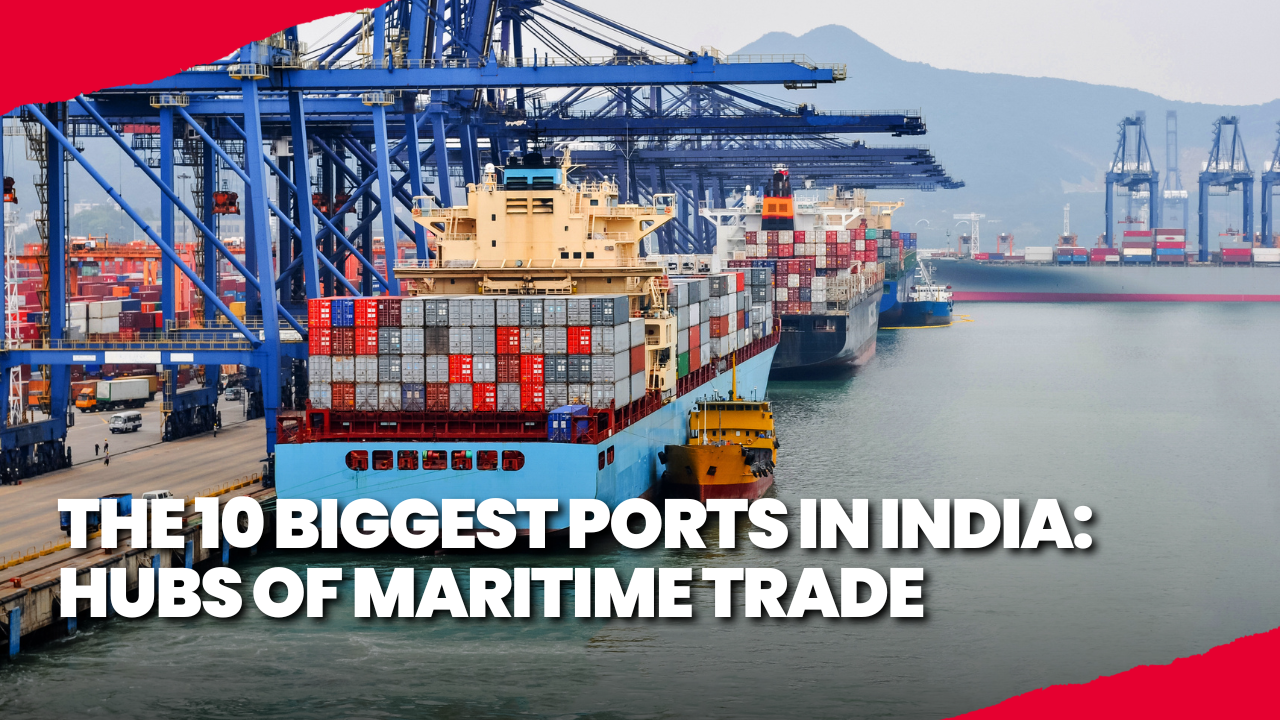
India has more than 7,500 km of coastline and a very active economy. Its ports are very important for connecting India to the rest of the continent. In the fiscal year 2024–25, the country’s major ports broke all kinds of records by moving about 855 million tonnes of goods, 4.3% more than the previous year. These ports not only help with transportation and trade, but they also help businesses grow and the economy stay strong. The 10 biggest ports in India are essential trade hubs, such as the country’s largest port and other major seaports.
1. Paradip Port (Odisha)
It was the busiest port for goods in 2025, with 150.41 million tonnes going through it. This deep-water port on the East Coast is important for bulk products like coal, iron ore, and fertilizer. It can handle big Capesize ships with a 16-meter draft. Due to its strategic importance and ongoing investment in infrastructure, Paradip has performed brilliantly.
2. Deendayal Port (Kandla Port)
Deendayal Port, which used to be called Kandla Port, moved 132.3 million tonnes of products in 2024, more than any other port in western India. Kandla Port receives and ships the most cargo of any port in India, especially oil, edible oils, and bulk goods.
3. Jawaharlal Nehru Port (Maharashtra)
5.84 million TEUs, or about 78 million tonnes of container cargo, went through JNPT, making it the biggest port in India. The port is still adding to its infrastructure with ADB-backed changes that will make it more efficient and increase its handling capacity.
4. Visakhapatnam Port
It is India’s third-biggest port regarding the amount of goods it handles. It helps ship iron ore, steel, and coal, and is one of the most efficient container ports. Also it was the busiest port on the East Coast in FY 2023–24, with 81.09 million tonnes of cargo going through it.
5. Port of Mumbai
Mumbai Port, one of India’s oldest major ports, moved 67.26 million tonnes of goods last year, a new high. Mumbai Port still handles general trade, passenger services, and regional cargo flows, even though nearby JNPT is more important for containers.
Also Read This: How the Indian Government Schemes Help Exporters Succeed
6. Cochin Port (Kerala)
It is on Willingdon Island and Vallarpadam. Cochin Port handled about 37.8 million tonnes of goods, including containers, through India’s first transshipment port. Many important things come through this port for South India, like tea, spices, oil, and shipping containers.
7. Chennai Port
Chennai Port has been around since 1881 and receives about 136 million tonnes of cargo yearly. It is a relevant hub for southern India’s exports of cars, imports of steel, and container volumes.
8. The Kamarajar Port is in Ennore, Tamil Nadu
Kamarajar Port, which is also called Ennore Port, moved about 91 million tonnes in FY 2022–23. It takes containers, coke/lime, coal, LNG, and cars and serves Chennai’s northeastern port traffic.
9. V. O. Chidambaranar Port (Tuticorin, Tamil Nadu)
About 111 million tons were handled at Tuticorin’s V.O. Chidambaranar Port, and about 0.8 million TEUs (about 7% of the country’s container volume) were shipped. It links South India to markets everywhere, such as the US, China, and Sri Lanka.
10. The port of Mormugao in Goa
Even though it only handles about 63 million tonnes of goods a year, Mormugao is still one of India’s most important deep-water ports on the west coast. It handles iron ore and coal exports.
Why Are These Ports Important?
Each port is important to India’s trade ecosystem in multiple ways.
- Paradip and Deendayal handle most of the large goods.
- JNPT is the country’s central hub for shipping containers.
- Visakhapatnam is the center of trade in the east, and Mumbai Port is still used as an ancient entrance.
- The export routes in South India depend on Chennai, Ennore, and Tuticorin.
- Cochin and Mormugao are good places for mineral trades and transshipment points.
India can send goods like cars, steel, fertilizers, containers, electronics, farming goods, and coal through these ports because they are all connected.
What Remains Next
Port productivity will be improved through modernization, mechanization, digital logistics platforms, and better connection to the hinterland through freight corridors and multimodal networks. More people from the private sector will be able to take part in PPP projects. To handle more than 1 billion tonnes at its biggest ports in India by 2030, it will be vital to concentrate on building up the infrastructure and making it more environmentally friendly.
Wrapping It Up
The biggest ports in India are integral to the country’s economy. These 10 ports in India affect economic growth, regional connectivity, and industrial growth. They are also gateways to international trade. These ports show that India wants to develop into a major maritime force. In 2024–25, they moved a record amount of cargo, and big plans are underway to improve the infrastructure. India plans to handle more than 1 billion tonnes of freight by 2030. To make the blue economy reach its full potential, sustainable growth, digital change, and private investment will be needed.
FAQ
Over 150 million tons of cargo were moved through Paradip Port in Odisha in FY 2024–25, making it the largest port in the country.
About 5.84 million TEUs pass through Jawaharlal Nehru Port (JNPT) annually, making it India’s busiest container port.
Indian ports help trade, make jobs, encourage regional growth, and connect India to markets everywhere.
Also Checkout Our YouTube Channel: @limeinstituteofexportimport






